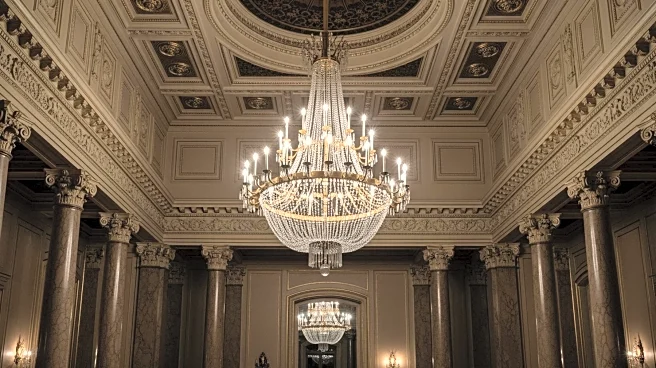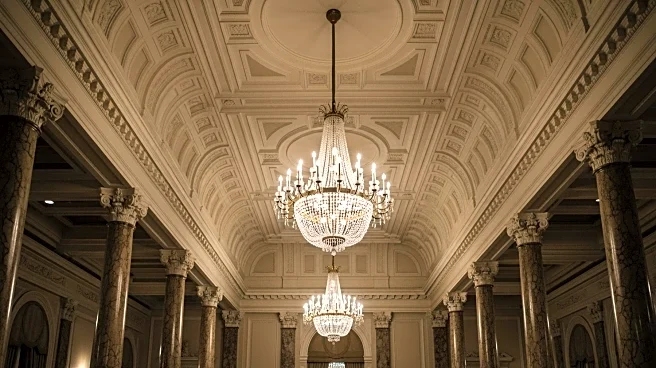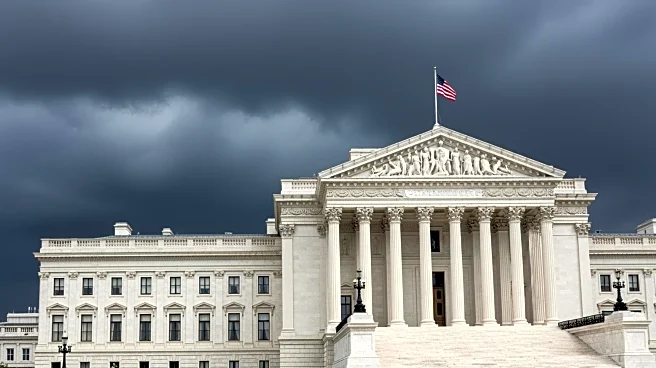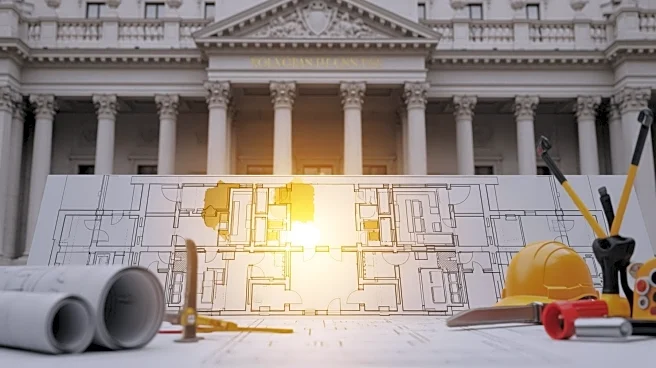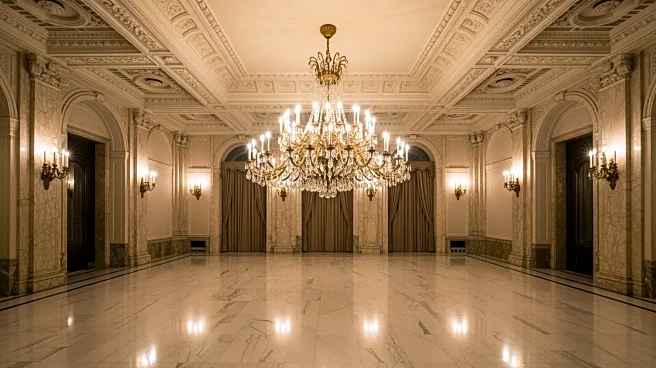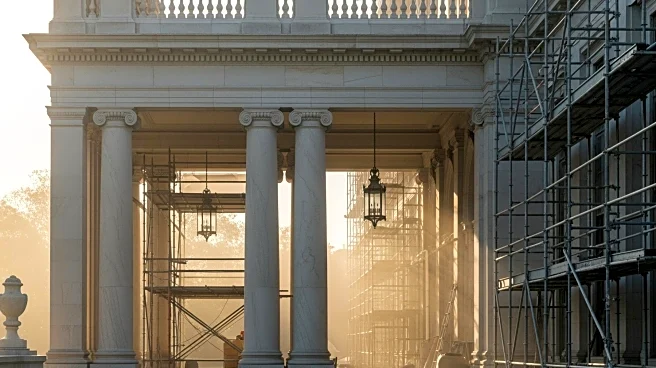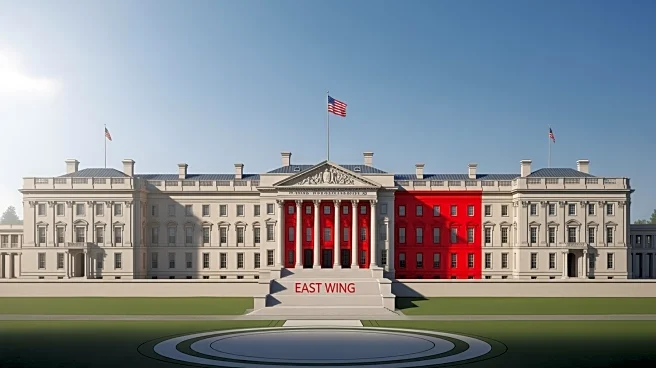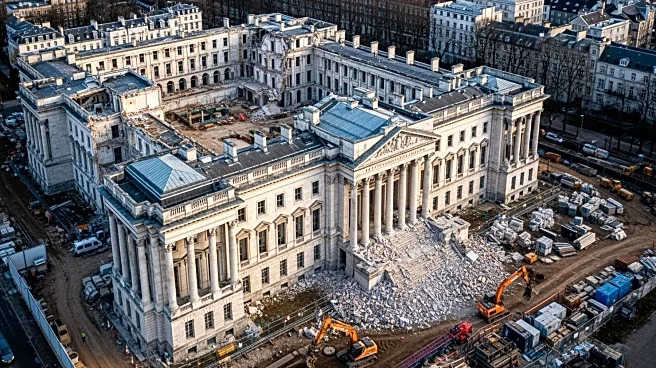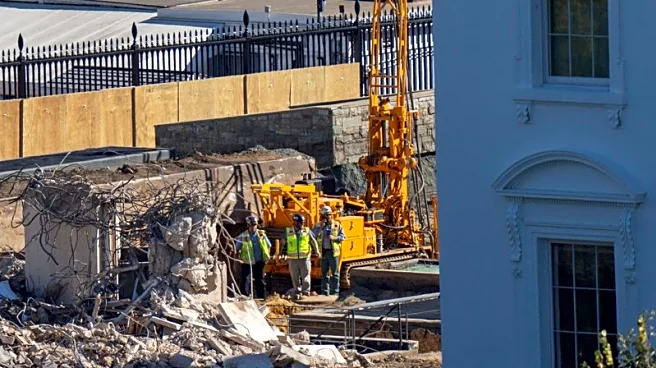What's Happening?
The East Wing of the White House has been demolished to make way for a new $300 million ballroom, a project funded by corporate donations. This decision by President Trump has stirred controversy, particularly due to concerns about bypassing the National
Historic Preservation Act of 1966 and the lack of consultation with preservation experts. The demolition, completed in just three days, has shocked many, including those who have worked in the White House and hold memories of the historic structure. The rubble from the East Wing has not been publicly disclosed, adding to the mystery surrounding the project.
Why It's Important?
The demolition of the East Wing raises significant concerns about the preservation of historical sites and the authority exercised by President Trump in making such decisions. This move could set a precedent for future alterations to national landmarks without proper oversight or consultation. The lack of transparency and consultation with preservation experts may lead to public distrust in how historical sites are managed. Additionally, the funding of the project through corporate donations raises questions about the influence of private entities on public properties and decisions.
What's Next?
The controversy surrounding the demolition may lead to increased scrutiny of President Trump's decisions regarding national landmarks. Preservationists and historians might push for more stringent regulations to protect historical sites from unilateral changes. There could also be calls for investigations into the funding sources and the decision-making process behind the demolition. Public and political reactions may influence future policies on the preservation of historical sites.
Beyond the Headlines
The demolition of the East Wing could have long-term implications for the cultural heritage of the United States. It highlights the tension between modernization and preservation, raising ethical questions about the value placed on historical structures versus new developments. This event may spark broader discussions on the role of corporate influence in government decisions and the importance of maintaining historical integrity.



